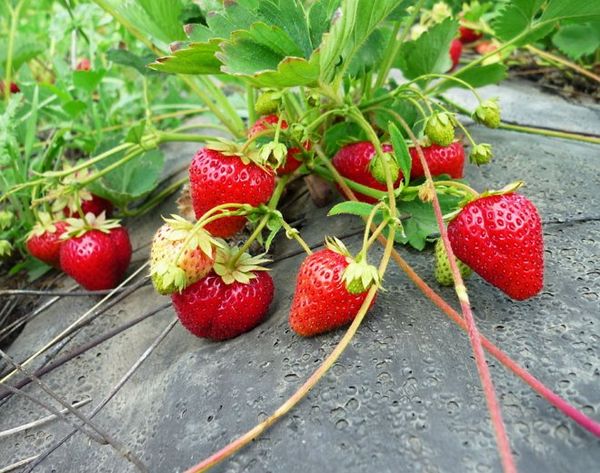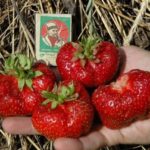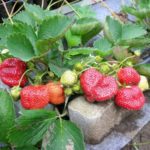Strawberry has an unforgettable taste and aroma, thanks to which both adults and children love it. This berry is very popular, but its price is quite high, and it is much more profitable to grow strawberries independently on the summer cottage.
Table of contents
- Is it possible to grow strawberries in the country?
- Popular species and good varieties for Siberia
- Proper planting on the garden in the open ground - step by step instructions
- Technology and secrets of strawberry care for a good harvest
- Preparing for the winter
- The subtleties of growing sweet and aromatic berries
Is it possible to grow strawberries in the country?
Independent cultivation of strawberries at the dacha is very painstaking, but at the same time a simple task. With the correct implementation of all the rules of the plant will actively bear fruit and bring a good harvest.
The complexity of cultivation lies in the fact that the cultivation of strawberries will have to spend a lot of effort to perform such routine actions as watering and weeding from weeds.
To grow this berry in the open ground in the garden can be both in southern and northern latitudes and in Siberia. The key to success in this case will be correct selection of varietiesthat needs to be adapted for a particular locale. The modern market can offer a huge number of types of strawberries. All of them differ from each other in such criteria as climatic stability, ripening time, size and taste of fruits, etc.
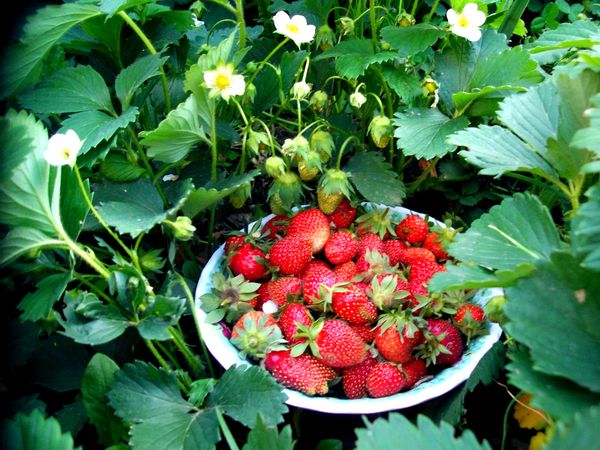
Popular species and good varieties for Siberia
For beginners, it is best to turn their attention to the well-known varieties that have already established themselves:
- Darenka - this early ripe variety boasts the presence of immunity to fungal diseases and pests. Also, this plant tolerates winter temperatures and brings a large amount of harvest. Berries of medium size (15-20 grams) have the shape of a blunt cone. The taste is pleasant, sweet and sour;
- Kama - this variety has excellent resistance to frost and drought. There is a susceptibility to infection with brown or white spot. Large fruits weighing 25-35 grams are made in the shape of a rounded rhombus, characterized by the presence of ribbing. When fully matured, the peel takes on a maroon shade. The flesh is juicy, tender and sour-sweet;
- Mashenka - the variety of the Russian selection is perfectly adapted to the conditions of the middle zone. The plant is not afraid of diseases and return frost, but it brings a good harvest. The leaves on the bushes are large, and the flower stalks are powerful and resistant. Oblong, bright red berries have a pleasant taste and strawberry aroma;
- Queen Elizabeth - the peculiarity of the remontant variety will be its large and very sweet fruits. The plant can tolerate severe frosts, return frosts, insect attacks and diseases. Productivity is always high. The main disadvantage of the variety is that it does not form a mustache, so it will have to be propagated with the help of seeds.
- Darenka
- Kama
- Mashenka
- Queen Elizabeth
Proper planting on the garden in the open ground - step by step instructions
Planting strawberries at their summer cottage is first necessary. determine the timing. The gardener has several options for the development of events:
- Spring (April) - a bed for strawberries should be prepared in the autumn of the previous season;
- Summer (July 20-25) - the beds are also prepared from autumn;
- Autumn (September) - in this case, the soil for plants is prepared 2-3 weeks before the work.
Once the deadlines have been determined, you can proceed to bed formation. The place on which they will be located must meet the following requirements:
- Soil should be sandy or loamynecessarily breathable and nourishing;
- The optimum level of acidity should be within 5.5-6.5 Ph. In case the index is lowered, it can be raised by adding dolomite flour. It is worth remembering that such work can be carried out only in the fall;
- For the cultivation of strawberries are not suitable places of accumulation of precipitation and melt water, because in this case there is a big risk of rotting of the root system;
- Groundwater should be located at a depth equal to 70-80 centimeters;
- Experienced gardeners recommend placing strawberries separately from all other garden crops;
- The best predecessors of strawberries are legumes and cereals or greens. It is not necessary to plant in those places where tomatoes or potatoes were grown before;
- In order for the berries to ripen, juicy and sugary, the place for planting should be sunny.
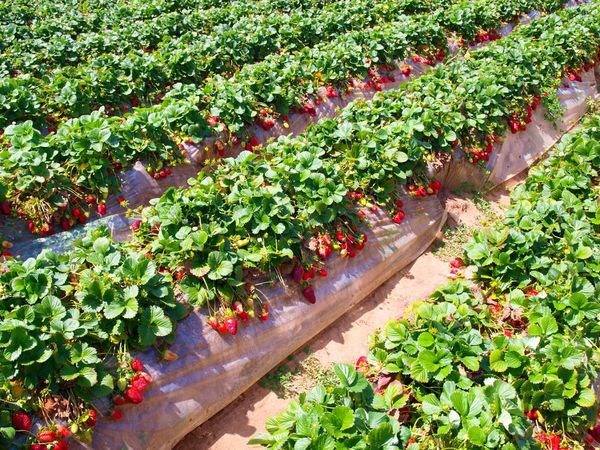
The method of forming the beds will depend on the chosen place of cultivation. In the event that the plot is located on a hill and is well illuminated by sunlight, it is enough to build a bulk bed with a height 10 centimeters. With a high location of groundwater, this figure increases up to 35-40 centimeters.
In order to make the soil more fertile for one square meter of soil, the following fertilizers are applied:
- 8 kilograms of compost;
- 100 grams of superphosphate;
- 30 grams of potassium salt.
The next step will be the selection of healthy seedlings:
- they should be free from signs of mechanical damage and disease;
- planting material with the most powerful and branched roots is best engraved;
- outlet must be composed 3-4 leaves.
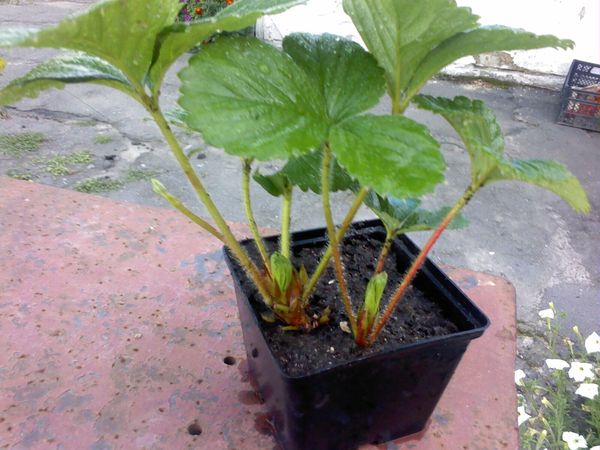
Performing such work will help to form a nourishing and water regime. Also, during the digging can detect and destroy a variety of pests.
Once the preparatory work is completed, you can start planting plants:
- The best time for landing is early morning or late evening on a cloudy day;
- The standard landing pattern indicates that the distance between rows is 60-70 centimeters, and between individual plants 20-25 centimeters;
- The hole is dug to the depth 13-15 centimeters;
- When the seedling is immersed in the ground, it is necessary to ensure that the root neck is flush with the ground. Otherwise, the plant will soon die;
- The final step will be abundant watering and mulching plantings.
Planting and growing strawberries is a fairly simple process, the main thing is to follow all the rules and conduct preparatory activities in time.
Technology and secrets of strawberry care for a good harvest
Watering
Strawberry care includes many aspects. There are no technologies or secrets for harvesting. It is enough to follow the step-by-step instructions on planting and breeding, plant in a reasonable time and take care of it properly. First of all, water the plants properly, that is, it is not allowed to overmoisten and dry the ground.
Experienced gardeners recommend watering strawberries after planting and flowering, while removing the berries, in late summer and early autumn. On one bush will spend 1 liter of warm water. Immediately after watering, planting mulch 7-8 cm layer of humus.
Fertilizers and feeding
Fertilize strawberries according to the following scheme:
- In early spring, during the formation of leaves and after harvest, the bushes are fertilized with nitrogen-containing fertilizers;
- In late August and early September, phosphorus-potassium fertilizers are fertilized;
- Before flowering and after harvesting, planting is fertilized with a solution of manure, humus or wood ash.
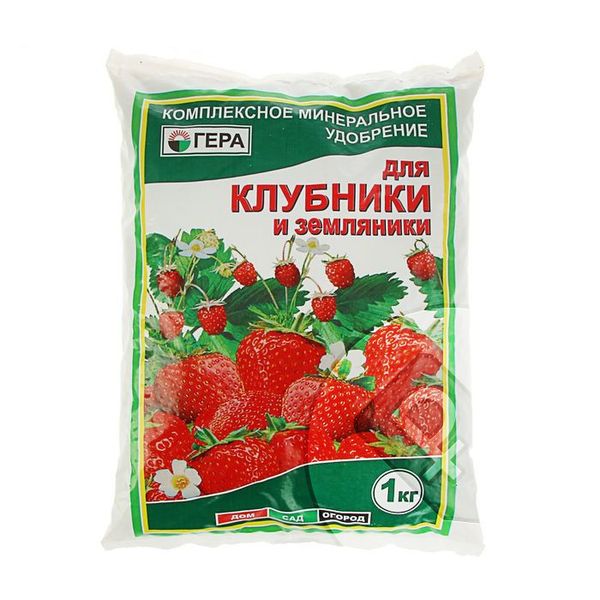
Protection against diseases and pests
Strawberry beds needed weed regularly and loosen. This procedure will be a good prevention of fungal diseases.
In the event that the gray rot still struck the plant, in order to get rid of it before planting, flowering with iodine solution, a teaspoon of which is diluted in 10 liters of water. The procedure is repeated after 7-10 days.
To prevent diseases during flowering and after harvesting, the following treatments are carried out:
- fungal diseases - Fitosporin;
- spotting and gray rot - copper oxychloride;
- powdery mildew - 2 tablespoons of potassium permanganate, diluted in 10 liters of water.

During the whole growing season from the bushes remove mustacheThis will contribute to the formation of a larger and more attractive crop. After collecting the berries, it is necessary to cut off the entire green part of the plants, leaving only a few lower sheets.
Preparing for the winter
Growing strawberries in areas with harsh and unpredictable climate, you should take care of the protection of plants for the winter period. In order for the shrub to tolerate cold temperatures well choose climate resistant varieties.
To prepare the plant for the winter, its abundantly watered and mulched with straw. With the onset of the first frost, planting is covered with spruce, film, agrofiber, or any other means at hand. If the winter has little snow, then you need to additionally throw snow on the ridges.
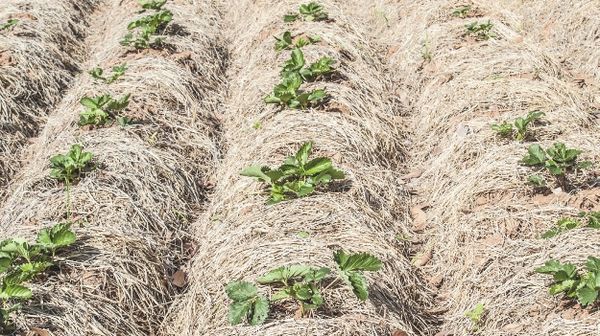
The subtleties of growing sweet and aromatic berries
In order to grow a crop of tasty and juicy berries you need to follow some rules:
- It is best to pick zoned and proven varieties, care of which will not bring special difficulties;
- In order to get a good harvest, it is very important to adhere to the agrotechnics of growing strawberries, namely, to follow the rules of the neighborhood, to think carefully about the place of plant growth and planting. Also very important correctly and time to feed and water bushes;
- Weeds take a large amount of nutrients from strawberries, so they should be removed as soon as possible;
- Effective and timely fight against diseases will help preserve the quality and quantity of the crop;
- The whiskers deplete the plant, making the berries smaller and the total yield drops. It is recommended to maintain fruiting regularly remove shoots strawberries.
Growing strawberries on your own plot is the dream of almost every gardener. In order to bring it to life, it is necessary to adhere to all the rules for plant cultivation and not to neglect the advice of experienced gardeners.
